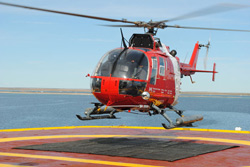Please note: You are viewing
the unstyled version of this website. Either your browser does not support CSS
(cascading style sheets) or it has been disabled. Skip
navigation.
Dr. Mary-Louise TimmermansJuly 21, 2011Today marks the start of the 2011 Joint Ocean Ice Studies (JOIS) expedition, which involves the collaboration of Fisheries and Oceans Canada researchers, and scientists from the USA, Japan and other institutions in Canada. This includes our project "Continuing the Beaufort Gyre Observing System (BGOS) to Document and Enhance Understanding Environmental Change in the Arctic" which forms part of the National Science Foundation (NSF) Arctic Observing Network (AON). The major goals of the 4-week expedition aboard the Canadian Coast Guard icebreaker Louis S. St-Laurent relate to understanding the physics, geochemistry and biology of the Arctic Ocean's Canada Basin. The scientific party of 28 converged in Cambridge Bay in Nunavut, Canada, yesterday. Cambridge Bay ("No trees shedding leaves to rake, no lawns to mow.") is a town of around 1500 people on the southeast coast of Victoria Island in the Canadian Arctic Archipelago. Cambridge Bay is the largest town along the Northwest Passage and will soon be home to a Canadian High Arctic Research Station. The year-round research facility, with an initial budget of 18 million, is projected to open in 2017 to coincide with the unveiling of a new Canadian icebreaker. This afternoon, scientific personnel and gear were transferred from the Cambridge Bay airport via helicopter to the ship to join the captain and 56 crew members already on board. Scientists spent the afternoon unpacking gear and setting up lab spaces on the ship. Chief Scientist Bill Williams (IOS) led our first scientific meeting and outlined watch schedules. The ship operates around the clock with a day (noon to midnight) and a night (midnight to noon) watch. Tonight and tomorrow we'll steam through Dease Strait, Coronation Gulf, Dolphin and Union Strait and the Amundsen Gulf (between Banks Island and Canada's mainland) to the Beaufort Sea - we're making good time at 15 knots in light ice conditions and are on track to arrive at our first scientific station (around 123 W, 71 N) at midnight tomorrow. Last updated: October 7, 2019 | |||||||||||||||||
Copyright ©2007 Woods Hole Oceanographic Institution, All Rights Reserved, Privacy Policy. | |||||||||||||||||



